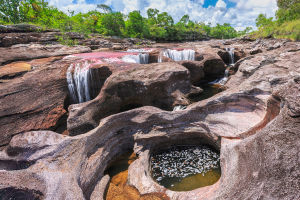Friends, Strasbourg is a city where waterways lace through timber-framed streets and contemporary life sits beside centuries of craftsmanship. This guide focuses on distinctive experiences—with practical costs, timings, and local insights—so the visit feels curated, lively, and deeply connecting.
From stunning medieval castles to delightful Alsatian cuisine, there’s plenty to entice every traveler. Here’s a curated guide detailing must-see attractions and activities that are sure to create unforgettable memories.
Heritage Stroll
Begin wandering the UNESCO-listed old town, centered around Place Kléber and the network of narrow lanes. The area’s half-timbered houses, carved façades, and stone bridges date back to the Renaissance and earlier; a self-guided walking leaflet from the Strasbourg Tourist Office is free and maps out highlights in under two hours.
For deeper context, book a local history walk (about $20 per person) that explains urban evolution, local legends, and the significance of the city’s preserved canals.
Alsace Villages
Allocate a day to a small-group excursion to nearby Alsatian gems—Colmar, Riquewihr, and Eguisheim—priced around $110–$130 including coach transport and a guided walking segment. These villages feel lifted from a storybook: cobbled alleys lined with flower-blooming balconies, regional artisan shops selling mustard and handcrafted pottery, and elevated viewpoints over terraced vineyards.
The tour usually departs Strasbourg between 8:30 AM and 9 AM, returning by 6 PM, making it an efficient cultural deep dive.
Canal Cruise
Seeing Strasbourg from the water changes perspective. Batorama boat tours glide the Ill River circuit, offering 70-minute narrated trips for approximately $17. Departures run every 30 minutes from the main dock near Petite France from 10 AM through early evening.
The calm passage frames the city’s mix of old mills, covered bridges with fortified towers, and the modern European Quarter, making it a restful way to absorb architecture while learning about urban planning without the crowds.
Taste Alsace
Food shapes identity here—join a guided tasting walk through central markets and bistros for about $60 per person. Samples include tarte flambée (a thin flatbread with cream and onions), regional cheeses, spiced gingerbread cookies, and fresh fruit preserves. Local purveyors explain ingredient origins and preparation techniques. These tours typically start mid-morning and last three hours.
Bike Tour
Strasbourg is one of Europe’s most bike-friendly cities, with over 600 km of bike lanes. Rent a city bike for $15 per day from Vélo’v stations and take a guided cycling loop (about $25 for a group ride) that covers the quays, Neustadt’s wide boulevards, and the green banks of the River Ill.
Biking uncovers hidden courtyards, contemporary public art, and local neighborhood cafés where espresso costs $3. The tours usually last 2.5 to 3 hours, offering both orientation and fresh-air exploration.
EU Quarter
The European Quarter reflects Strasbourg’s contemporary role in continental dialogue. Free public viewing areas allow observation of debates and the distinctive modern architecture of the assembly buildings. A self-paced walk through the area takes about 90 minutes—start at the Place de l’Étoile and proceed along open plazas to the glass facades, learning via informational panels placed by the institutions.
Nearby cafés serve light fare (savory pastries for $4), making it easy to pause and reflect on the city’s international dimension.
Local Stay
Choosing a base enhances access: boutique options like Hotel Cour du Corbeau offer rooms from about $180 per night in a restored 16th-century building, blending heritage with modern comfort. Budget-conscious travelers can stay at an urban guesthouse near the train station for roughly $120 per night, providing easy tram connections (single ride $2) across the city.
Reserve 2–3 months ahead during peak seasons (spring and early fall) to secure desirable rooms and favorable rates.
Wrap Up
Strasbourg’s layers unfold through these unforgettable experiences—historic walks, nearby village escapes, waterborne views, local flavors, bike exploration, and modern institutional insight—all anchored by thoughtful lodging. With clear price points and timing, the journey becomes less guesswork and more deliberate delight. Which of these will begin the next story from Strasbourg’s streets?


